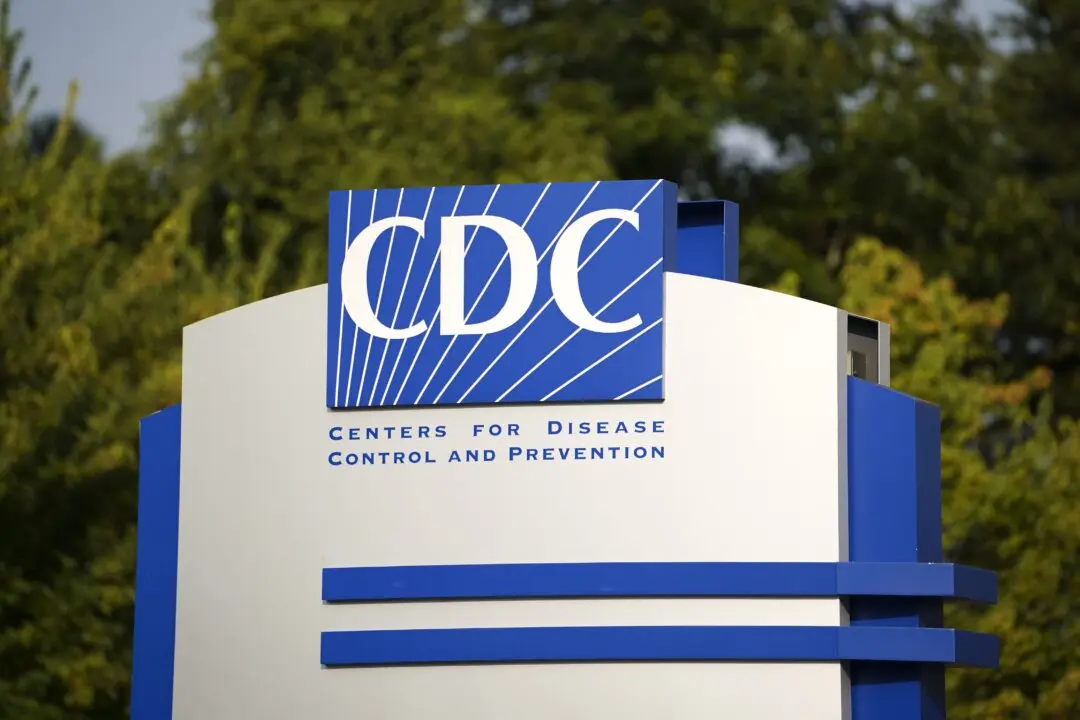Lawmakers, regulators, and union representatives sharply questioned the railroad industry’s safety efforts during a House hearing on July 23 that explored Norfolk Southern’s toxic train derailment in East Palestine, Ohio, last year.
The forum was held by the Railroads, Pipelines, and Hazardous Materials Subcommittee.
David Arouca, of the Transportation Communications Union, and Gregory Hynes, of the International Association of Sheet Metal, Air, Rail, and Transportation Workers—Transportation Division (SMART-TD), accused the railroads of focusing on profits above safety.
The safety record of Class I railroads “has stagnated over the last decade—and by some measures deteriorated,” Federal Railroad Administrator (FRA) Amit Bose said.
“Despite assertions to the contrary, derailment rates for our nation’s largest rail companies have not significantly improved,” he said.
The FRA has introduced five regulations under the Biden administration to address safety but “in every instance except one, the railroad industry has either sued to block them or filed petitions for reconsideration,” Mr. Bose said.
National Transportation Safety Board (NTSB) Chair Jennifer Homendy testified that there are 215 open rail safety recommendations and 116 recommendations that were closed without action.
“The collisions and derailments we see in our investigations are tragic because they are preventable, and we believe the safety issues we identify in these investigations should be acted on swiftly,” Ms. Homendy said.
Sponsored by Rep. Troy Nehls (R-Texas), chairman of the Railroads, Pipelines, and Hazardous Materials Subcommittee, and Rep. Seth Moulton (D-Mass.), the bill features four additions to the Railway Safety Act crafted in the Senate last year. The Senate Commerce Committee has advanced the measure.
The measure would also mandate that states notify first responders of the AskRail app, which provides data on hazardous materials transported in rail cars, and establish a pilot program to address connectivity issues for the app along the rail network.
The bill would also authorize an additional $1 billion for the Railroad Grade Crossing Elimination Program and $100 million each year for an FRA grant program to install railcar telematics systems and gateway devices on cars carrying hazardous materials.

The Senate version of the safety bill has languished because of Republican opposition to some provisions, the two-person crew requirement among them. But Mr. Nehls made his pitch to overcome similar resistance in the House.
The Railway Safety Act was introduced last year by Sens. JD Vance (R-Ohio), Sherrod Brown (D-Ohio), John Fetterman (D-Pa.), and Bob Casey (D-Pa.), among other lawmakers.
Mr. Vance was named former President Trump’s vice presidential running mate last week.
“The Railway Safety Act in the Senate is supported by President Trump and is authored by vice presidential nominee Sen. Vance,” Mr. Nehls said at the hearing.
“Taking Sen. Vance’s bill and adding these four safety provisions makes this a very good rail safety bill and I humbly ask for your support because it’s the right thing to do.”
Mr. Moulton said in a statement that the measure he introduced with Mr. Nehls is “a true bipartisan and bicameral effort.”
“Freight rail is the most efficient and safest way to transport goods across our country, and it provides over 160,000 American jobs, but these improvements are overdue. This bill would ensure that this $80 billion industry operates more safely and efficiently for years to come,” Mr. Moulton said.
The hearing was prompted by the train wreck in February 2023 in East Palestine, a village in eastern Ohio a mile from the Pennsylvania state line.
On Feb. 3, 2023, a Norfolk Southern Railway freight train with 151 cars derailed, spilling hazardous chemicals, including vinyl chloride, onto the ground and into the air.
Burning vinyl chloride also produces a small amount of phosgene gas, which was used as a chemical weapon in World War I. When 38 of the rail cars derailed, a fire ensued, damaging an additional 12 cars.
Eleven cars carrying hazardous materials derailed, according to the National Transportation Safety Board.
To avoid an explosion that officials said would send shrapnel flying, they intentionally released vinyl chloride and burned it on Feb. 6, 2023, sending up a massive cloud of black smoke that could be seen for miles.
Ohio Gov. Mike DeWine lifted an evacuation order on Feb. 8, 2023, saying it was safe for residents to return to their homes. After that, officials from federal and state agencies repeatedly said tests showed that the air and water were safe in East Palestine and surrounding communities.
However, residents still report headaches, vomiting, burning eyes, rashes, and other ailments.
The NTSB investigation found that the accident was caused by an overheated bearing. In its final report, the agency pointed out that the rail company never inspected the car after picking it up in St. Louis.
Ms. Homendy opened the hearing by stating, “On behalf of the entire agency, I want to recognize the significant impact this derailment has had.”
Some people have downplayed the effects of the derailment and the decision to vent and burn the potentially toxic chemicals because there were no deaths, Ms. Homendy said, but “the absence of fatality or injury doesn’t mean the presence of safety.”
The NTSB also announced that firefighters didn’t receive details of what the train was carrying for more than an hour after the derailment.
Decision to Burn Questioned
There are no standards currently for directing railroads on how to respond to bearing failure alarms, the NTSB stated at the hearing. The NTSB also said that the vent and burn after the derailment wasn’t necessary.Norfolk Southern and its contractors withheld accurate information from OxyVinyls, the company that made the vinyl chloride, which compromised the integrity of the vent-and-burn decision, according to the NTSB.
Norfolk Southern contractors who recommended blowing the vinyl tank cars open and burning the contents kept encouraging the vent-and-burn strategy even though evidence showed that the tank cars were cooling after the derailment, NTSB officials said at the hearing.
Last month, Norfolk Southern said it would lead an industrywide initiative to improve how vent-and-burn decisions are made.
Norfolk Southern agreed to a $600 million settlement in April to resolve a class action lawsuit regarding the East Palestine event. A judge approved the settlement in May.
In a statement issued after the agreement was announced, Norfolk Southern stated: “The agreement is designed to provide finality and flexibility for settlement class members. Individuals and businesses will be able to use compensation from the settlement in any manner they see fit to address potential adverse impacts from the derailment. This could include healthcare needs and medical monitoring, property restoration and diminution, and compensation for any net business loss.”
Earlier in July, when East Palestine officials broke ground on a new park funded by Norfolk Southern, the rail carrier’s CEO Alan Shaw told reporters his thoughts about the NTSB’s final report.
“Chair Homendy and NTSB came to Norfolk Southern, and we sat down without team leaders and our operations team,“ he said. ”We talked about ways in which we can mutually advance safety. Norfolk Southern has come out and endorsed the NTSB recommendations following the investigation of the East Palestine derailment.”






